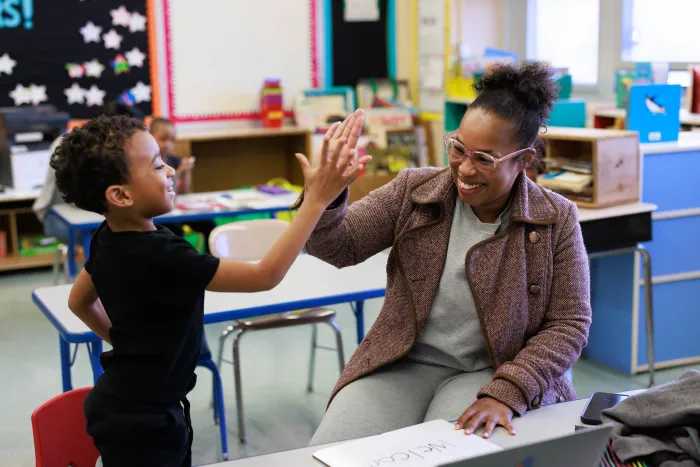BY SAM SPOKONY | It’s lasted for more than two years — but, as they say, all ’hood things must come to an end.
The New York Times announced in June that, by the end of the year, it will terminate its partnership with New York University’s journalism school on The Local East Village Blog, which allowed students to dig into the stories generally covered by established community newspapers and neighborhood bloggers.
The site was founded in September 2010, and has featured articles from dozens of N.Y.U. students and community members. The Times is pulling out because hyperlocal news is “not an area of investment at the present time,” a spokesperson for the newspaper said, adding that The Times’s efforts are currently focused on global and digital expansion.
“Our collaboration with The Times was always intended as an experiment,” said Daniel Maurer, editor of The Local East Village and a faculty member at N.Y.U.’s Arthur L. Carter Journalism Institute.
That experiment paid off for budding N.Y.U. journos, Maurer added — if not for The Times — because his students were challenged to rise to the paper’s editorial standards, and were motivated by having to produce at the level of a professional news organization.
But amidst all the boons for the university — which many East Village residents believe is systemically destroying their neighborhood — there’s been no love lost between The Local and some of the area’s most beloved blogs.
“[The Local] wasn’t about understanding hyperlocal journalism. It was about testing what scholars and a huge news organization thought it should be,” said Dave Gustav, co-founder of Bowery Boogie, which covers the Lower East Side.
Gustav, who graduated from N.Y.U., went on to say that, while the relationship may have had practical benefits for both The Times and his alma mater, it lacked a vital sense of neighborhood legitimacy.
“An example that might put this into better perspective would be to imagine if a culinary institute partnered with Chipotle to open a restaurant,” he explained. “Chipotle might have the same ingredients, but the traditional style and authenticity is lost.”
When asked about how he perceived the blogosphere’s response to The Local, Maurer stressed that at least one good relationship was formed, since the two co-founders of The Lo-Down, which also covers the Lower East Side, actually made time to speak to N.Y.U. students about their work.
The Lo-Down couldn’t be reached for comment by press time.
In addition, the late Bob Arihood, who blogged at Neither More Nor Less, also addressed the N.Y.U. students about how he found his stories.
Without naming any names, Maurer added that there was some notably unfriendly backlash.
“While some sites have been collegial and have appreciated another source of news in the neighborhood, others have accused us of ‘gentrification of the blogosphere,’ as one of them put it when I tried to get a beer with him,” he said. “Personally I think that — like the neighborhood sites we link to daily — we’re working hard to tell important stories, of which there are a countless number in the East Village; and to equate journalism with gentrification is a disservice to everyone who’s hungry for a wide variety of news about their neighborhood.”
The active, albeit somewhat mysterious, East Village blogger who identifies himself only as EV Grieve — and who runs a site of the same name — explained that while he was originally turned off by the “arrogance” of the N.Y.U. staff behind The Local, he doesn’t feel that way anymore.
Why? Because he hasn’t read enough of the articles to form an opinion.
“I really haven’t followed their work too closely,” said EV Grieve. “Or at all, to be honest.”
In what seemed like a thinly disguised dig, Bowery Boogie’s Gustav echoed that sentiment by saying that The Local’s end seemed inevitable because of a perceived lack of readership.
“Based on the traffic we got from The Local compared to other local blogs, I’m not sure if anyone was actually reading it,” he said. “Their name rarely came up in conversations about local blogs.”
Gustav added that he believed there was not enough positive outreach on the part of N.Y.U. students who were writing for The Local. More attempts to interact with his and other neighborhood blogs, he claimed, would have given the student journos a better knowledge of how real hyperlocal sites operate, in addition to gaining the lessons taught in their university programs.
“The few e-mails we received from student writers were usually requests for us to link to their stories,” Gustav said. “It came across as real desperate.”
With that idea of blogosphere engagement in mind, he added that Bowery Boogie would be happy to take on student interns if N.Y.U. decides to continue producing The Local on its own.
Maurer stressed that The Local East Village Blog will definitely continue, solely under the auspices of N.Y.U., and will evolve into “something still more ambitious and exciting.” He declined to elaborate, but said that the university would be ready to reveal more details in the near future.
The Times will also end its partnership at the end of the year with another The Local blog, which covered the Brooklyn neighborhoods of Fort Greene and Clinton Hill in collaboration with the City University of New York Graduate School of Journalism.
A Times reporter or editor was not made available for comment. A spokesperson for the 161-year-old newspaper said that it had “learned a great deal from these collaborations,” but he only specifically referenced a lesson about reader engagement.
Jim Schachter, who was The Times’s associate managing editor until July, told Harvard’s Neiman Journalism Lab that The Local blogs taught him, among other things, that hyperlocal coverage becomes better and more hard-hitting when it’s done by “professionals” rather than neighborhood bloggers.
“If you want to get really good content that gets hard questions answered,” Schachter said, “you need a fair amount of professional journalism.”



































